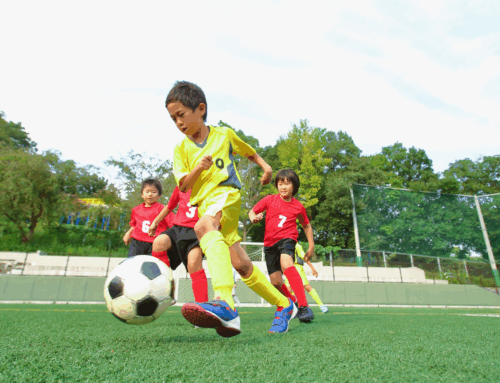Get our exclusive report. Download the iSport360 Club Switching Report Here – For Club Admins, Rec Leaders and Coaches.
Ignite the Fire: How to Get Your Sports Team Motivated
Every coach, captain, and team leader has faced it – that moment when your team’s energy feels flat, effort seems lackluster, and the spark that once drove everyone forward has dimmed. Whether you’re dealing with a mid-season slump, recovering from a tough loss, or simply trying to elevate your team’s performance, motivation is the secret ingredient that transforms good teams into great ones.
The challenge is that motivation isn’t one-size-fits-all. What fires up one player might fall flat with another. What worked last season might not work this year. Building and maintaining team motivation requires understanding your players as individuals while creating a collective culture that inspires everyone to give their best.
Understanding What Drives Athletes
Before diving into strategies, it’s crucial to recognize that athletes are motivated by different factors. Some are driven by competition and the desire to win, while others are motivated by personal improvement and mastery. Some thrive on team recognition, while others prefer individual acknowledgment. Understanding these different motivational drivers is the first step toward creating an environment where everyone can flourish.
Young athletes often struggle with confidence, especially after setbacks. They may be dealing with pressure from parents, academic stress, or social dynamics that affect their performance. Recognizing these factors helps you address motivation at its root rather than just treating the symptoms.
Creating a Foundation of Trust and Respect
Motivation starts with relationships. Players who trust their coaches and teammates are more likely to push through difficult moments and maintain effort even when things get tough. This means being consistent with your communication, following through on promises, and showing genuine care for your players as people, not just athletes.
Respect flows both ways. When players feel respected and valued, they’re more likely to respect the process, their teammates, and the goals you’ve set together. This includes respecting different personality types, learning styles, and individual circumstances that players might be facing.
Setting Clear, Meaningful Goals
Nothing kills motivation faster than uncertainty about what you’re working toward. Your team needs both short-term and long-term goals that feel challenging but achievable. These goals should be specific, measurable, and meaningful to the players themselves.
Instead of just saying “we want to win the championship,” break it down into process goals like “we want to improve our passing accuracy by 15%” or “we want to reduce turnovers by three per game.” These smaller, controllable goals give players something concrete to work toward and celebrate along the way.
Make sure your goals connect to something bigger than just winning games. Maybe it’s representing your school with pride, developing life skills like perseverance and teamwork, or creating memories that will last a lifetime. When players understand the deeper purpose behind their efforts, they’re more likely to stay motivated through tough times.
Recognizing and Celebrating Progress
Recognition is a powerful motivator, but it needs to be authentic and specific. Instead of generic praise like “good job,” point out specific improvements or efforts: “Sarah, your defensive positioning in the second half created three turnovers that changed the momentum of the game.”
Celebrate both individual and team achievements. Some players are motivated by public recognition, while others prefer private acknowledgment. Pay attention to what works for each player and adjust your approach accordingly.
Don’t wait for perfect performances to celebrate. Acknowledge improvement, effort, and positive attitude even when the results aren’t there yet. This builds confidence and reinforces the behaviors you want to see more of.
Building Team Chemistry and Unity
A motivated team is a connected team. Create opportunities for players to bond both on and off the field. This might include team dinners, community service projects, or simply structured time for players to get to know each other better.
Develop team traditions and rituals that create a sense of identity and belonging. This could be a pre-game routine, a team chant, or a way of celebrating successes together. These traditions become part of your team culture and give players something to take pride in.
Address conflicts quickly and directly. Nothing kills team motivation faster than unresolved tension or cliques that divide the group. Create an environment where players feel safe expressing concerns and work actively to maintain team unity.
Making Practice Engaging and Purpose-Driven
Boring, repetitive practices kill motivation faster than anything else. Keep practices varied, challenging, and fun. Explain the purpose behind each drill and how it connects to game situations. When players understand why they’re doing something, they’re more likely to approach it with intensity.
Create competition within practice through scrimmages, skill challenges, or team-building games. Healthy competition brings out the best in athletes and makes practice more engaging.
Set the tone with your own energy and enthusiasm. If you’re excited about practice, your players are more likely to be excited too. Your attitude is contagious, so make sure you’re spreading the right kind of energy.
Handling Adversity and Setbacks
How you respond to losses, injuries, and other setbacks will define your team’s character and motivation. Use these moments as learning opportunities rather than reasons to panic or place blame. Help players understand that setbacks are part of the journey, not the end of it.
Maintain perspective during difficult times. Remind players of their progress, past successes, and the reasons they started playing in the first place. Sometimes motivation requires looking backward before moving forward.
Create a culture where it’s safe to fail. Players who are afraid of making mistakes will play tentatively and lose motivation when things don’t go perfectly. Encourage risk-taking and frame mistakes as learning opportunities.
Involving Players in Leadership
Give players ownership over their motivation by involving them in goal-setting, problem-solving, and team decisions. When players feel they have a voice in the direction of the team, they’re more invested in the outcome.
Develop player leadership through captains, senior players, or rotating leadership roles. Peer motivation is often more powerful than coach motivation, and players can reach their teammates in ways that coaches sometimes can’t.
Encourage players to hold each other accountable in positive ways. This might mean having honest conversations about effort, supporting teammates through difficult moments, or celebrating each other’s successes.
Personalizing Your Approach
Get to know your players as individuals. What motivates each person? What are their goals, fears, and dreams? Some players respond to challenging conversations, while others need encouragement and support. Tailor your approach to each player while maintaining consistent standards for the team.
Regular one-on-one conversations can help you understand what’s working and what isn’t. These conversations also show players that you care about them personally, which strengthens their motivation to work hard for the team.
Creating External Motivation
Sometimes motivation comes from outside the team itself. This might involve setting up games against challenging opponents, participating in tournaments, or creating opportunities for players to be seen by college scouts or the broader community.
Connect your team to something bigger than themselves. This could be playing for injured teammates, representing their school or community, or working toward charitable goals. External motivation can provide extra fuel when internal motivation runs low.
The Long View
Building lasting motivation is about more than just getting fired up for the next game. It’s about creating an environment where players develop intrinsic motivation – the desire to improve, compete, and contribute that comes from within.
Help players develop a growth mindset where they see challenges as opportunities to improve rather than threats to their self-worth. This mindset will serve them well beyond their athletic careers and creates sustainable motivation that doesn’t depend on external factors.
Making It Sustainable
Motivation isn’t a one-time speech or a single team-building exercise. It’s an ongoing process that requires consistent attention and adjustment. What motivates your team in preseason might be different from what they need during playoffs.
Stay flexible and responsive to your team’s changing needs. Pay attention to energy levels, body language, and performance indicators that might signal a need to adjust your motivational approach.
Remember that as a leader, your own motivation and energy are crucial. Take care of yourself, stay connected to your own reasons for coaching, and maintain the passion that brought you to this role in the first place.
The Bottom Line
Motivating a sports team is both an art and a science. It requires understanding psychology, building relationships, and creating an environment where players want to give their best effort. The most motivated teams aren’t necessarily the most talented – they’re the ones where every player feels valued, challenged, and connected to something bigger than themselves.
The investment you make in building motivation pays dividends not just in wins and losses, but in the development of young people who learn to push through challenges, support their teammates, and pursue excellence in all areas of their lives. That’s the kind of motivation that creates not just better athletes, but better people.
Start with small changes, be patient with the process, and remember that building motivation is a journey, not a destination. Your team’s fire might start as a spark, but with the right approach, it can become a flame that burns bright all season long.
About the Author:
Amy Masters is a proud sports mom, seasoned coach, and dedicated club administrator with over a decade of experience in youth athletics. She launched Jr Lions Field Hockey in Hunterdon County, growing it from just 40 players in its first season to over 150 by year three. Fueled by the growing passion and competitive spirit of local athletes, she went on to found Omega Field Hockey Club, now serving players across New Jersey and Pennsylvania.
A former collegiate athlete herself, Amy played field hockey at Lock Haven University, where her love for the game truly took root. Off the field (and somehow still finding time), she leads marketing for iSport360 and co-edits the Youth Sports Survival Guide—the largest youth sports newsletter in the world.
Learn more or request a demo of our youth sports software that is helping teams improve communication, organization and player development.
July 15, 2025





